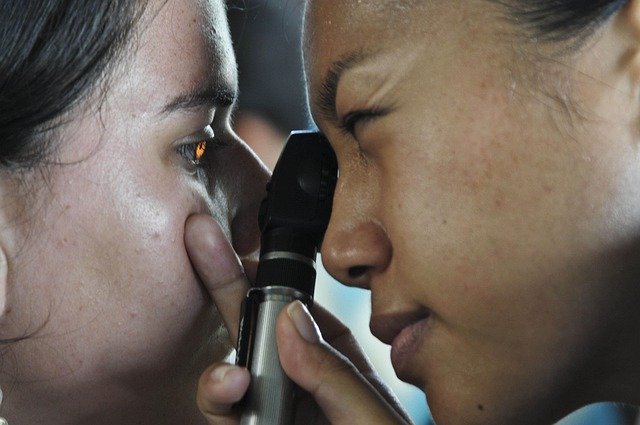Understanding Vision Tests for Color Blindness Detection
Color blindness affects millions of people worldwide, yet many remain unaware of their condition until they undergo proper testing. Vision tests specifically designed to detect color perception differences can reveal various forms of color vision deficiency, helping individuals understand how they see the world differently. These assessments use carefully calibrated patterns, numbers, and shapes to identify which colors a person may struggle to distinguish, providing valuable insights into their visual capabilities.

What is color blindness and how does it affect vision
Color blindness, more accurately termed color vision deficiency, occurs when the eye cannot distinguish certain colors or perceives them differently than most people. This condition affects approximately 8% of men and 0.5% of women globally. The human eye contains three types of cone cells responsible for detecting red, green, and blue light wavelengths. When one or more of these cone types function abnormally or are absent, color perception becomes altered.
People with color blindness don’t necessarily see the world in black and white, as commonly misconceived. Instead, they experience difficulty distinguishing specific color combinations, particularly reds and greens or blues and yellows. This can impact daily activities such as reading traffic lights, selecting ripe fruit, or interpreting color-coded information.
How color blindness tests help identify color perception differences
Color blindness tests serve as diagnostic tools to identify and categorize different types of color vision deficiencies. The most recognized test, the Ishihara Color Test, uses circular plates containing colored dots arranged to form numbers or patterns. Individuals with normal color vision can easily identify these figures, while those with color blindness may see different numbers or no pattern at all.
Other testing methods include the Farnsworth-Munsell 100 Hue Test, which requires arranging colored caps in gradual color transitions, and computer-based assessments that offer more precise measurements. These tests help eye care professionals determine the severity and type of color vision deficiency, enabling appropriate recommendations for daily life adaptations.
Common types of color blindness explained
The three primary categories of color blindness correspond to the affected cone cells in the retina. Protanopia involves difficulty perceiving red light, making reds appear darker and harder to distinguish from greens. Deuteranopia affects green light perception, causing confusion between reds and greens but typically allowing better distinction than protanopia.
Tritanopia, the rarest form, involves blue-yellow color confusion and affects fewer than 1% of the population. Complete color blindness, or monochromacy, where individuals see only in shades of gray, is extremely rare. Most people with color vision deficiency have partial impairment rather than complete absence of color perception.
How lighting conditions impact color recognition
Lighting significantly influences color perception for everyone, but particularly affects those with color vision deficiencies. Natural daylight provides the most accurate color rendering, while artificial lighting can distort color appearance. Fluorescent lights often enhance certain wavelengths while diminishing others, making color discrimination more challenging.
Incandescent bulbs tend to emphasize warmer tones, potentially making reds appear more orange and affecting blue perception. LED lighting varies widely in color temperature and spectrum, with some types providing better color recognition than others. Understanding these lighting effects helps individuals with color blindness choose appropriate environments for tasks requiring color discrimination.
How to interpret color blindness test results
Test results typically indicate the type and severity of color vision deficiency through numerical scores or categorical classifications. Mild deficiencies may only affect subtle color distinctions, while severe cases involve significant difficulty with entire color ranges. Results often include recommendations for adaptive strategies and tools.
Professional interpretation considers not just test performance but also real-world implications. Some occupations require specific color vision standards, making accurate assessment crucial for career planning. Results may also suggest specialized lenses or filters that can enhance color discrimination in certain situations.
| Test Type | Provider/Location | Cost Estimation |
|---|---|---|
| Basic Ishihara Test | Eye care clinics | $25-50 |
| Comprehensive Color Vision Assessment | Ophthalmology practices | $75-150 |
| Online Color Blindness Tests | Various websites | Free-$20 |
| Specialized Occupational Testing | Occupational health centers | $100-200 |
Prices, rates, or cost estimates mentioned in this article are based on the latest available information but may change over time. Independent research is advised before making financial decisions.
Color blindness testing provides valuable insights into individual visual capabilities and helps people understand their unique way of perceiving the world. While color vision deficiency cannot be cured, proper identification through testing enables individuals to develop effective coping strategies and make informed decisions about their daily activities and career choices. Regular eye examinations that include color vision assessment ensure comprehensive understanding of one’s visual health.
This article is for informational purposes only and should not be considered medical advice. Please consult a qualified healthcare professional for personalized guidance and treatment.



